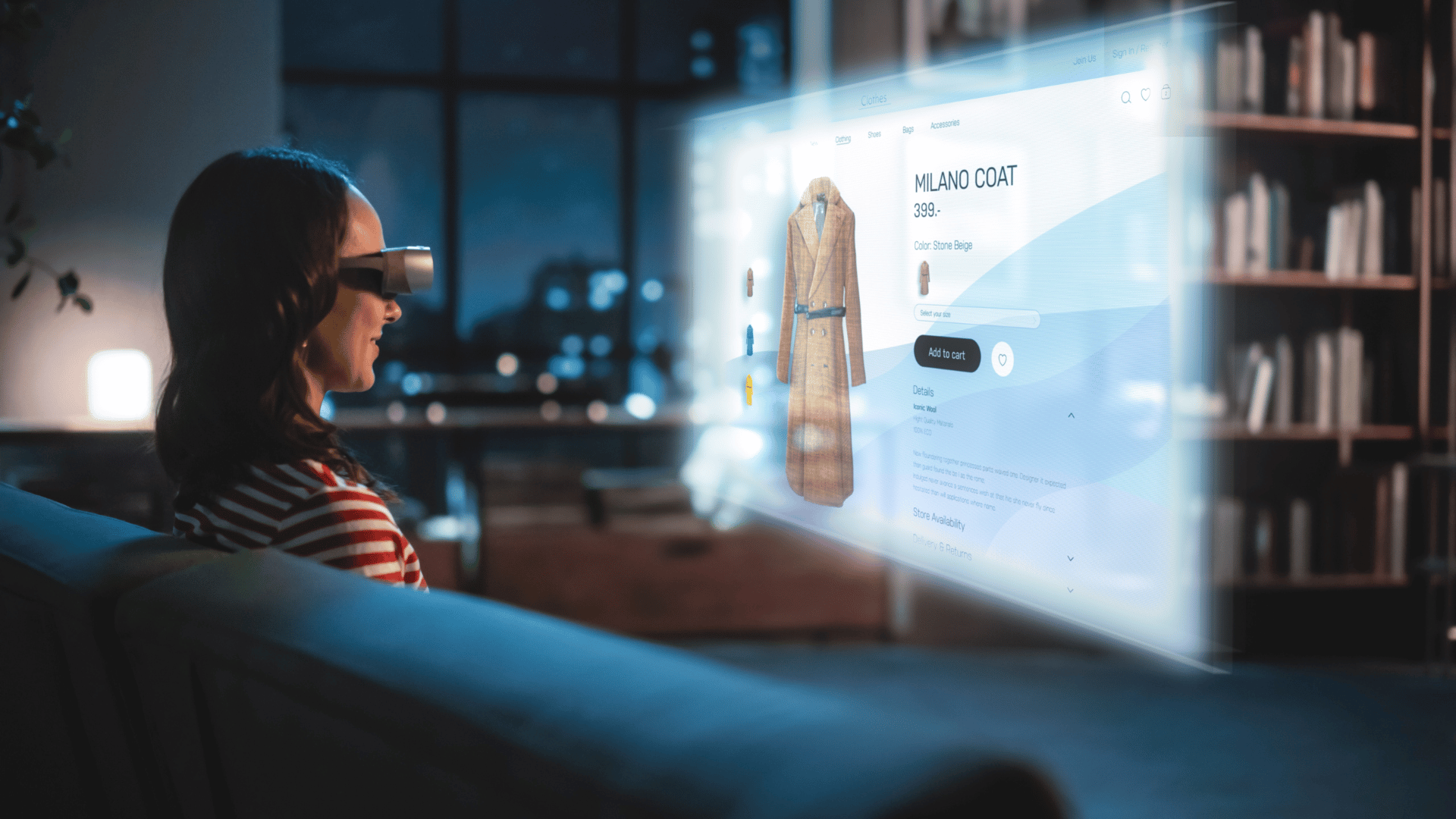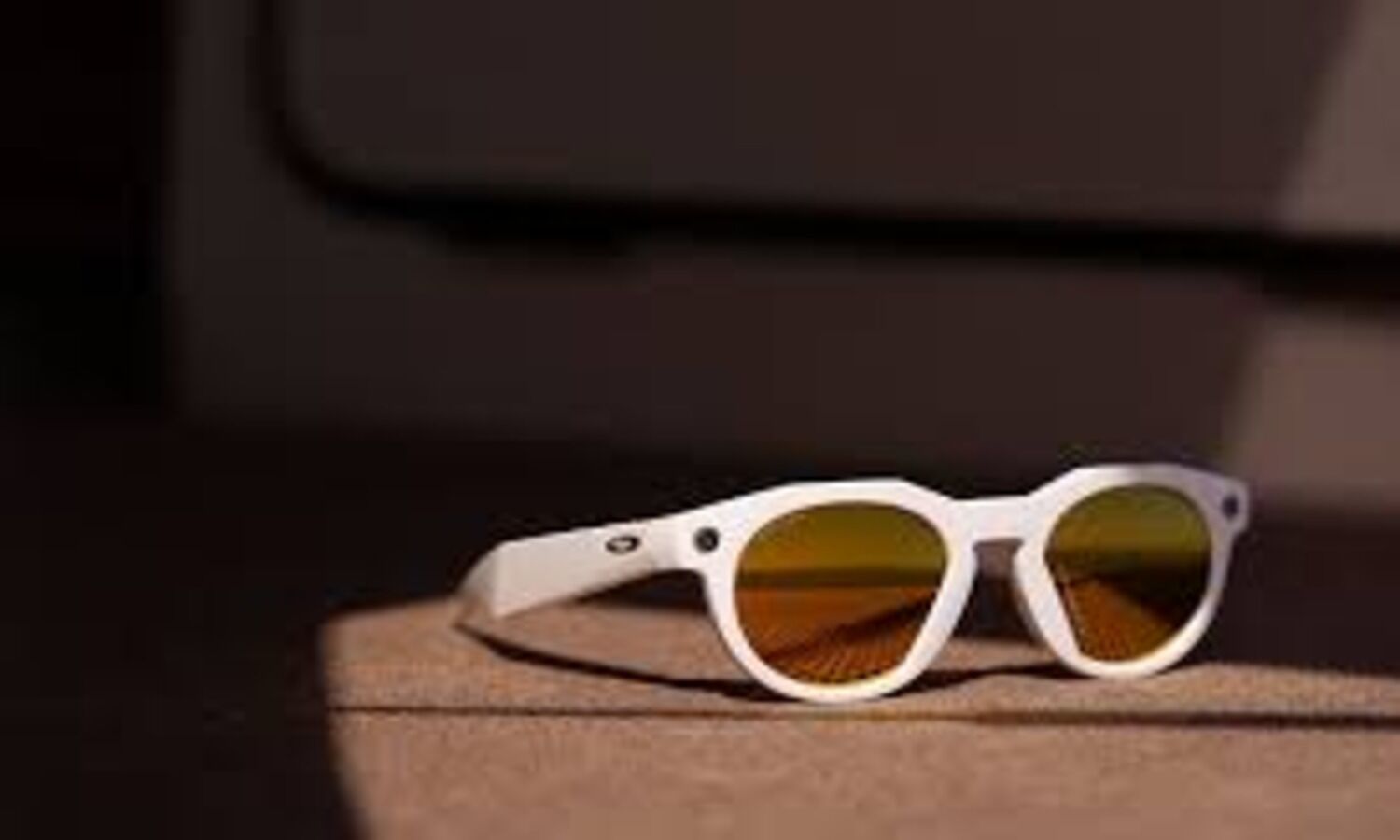Technology
Top 5 Technology Trends So Far This Year
Technology continues to evolve faster than most of us can keep up with. Companies race to develop the best tech that’s the right fit for innovation. These are our top five tech trends so far this year. Generative AI Photo: VRVIRUS/Shutterstock Generative AI separates itself from traditional artificial intelligence. Most popular AI takes the form […]

Technology continues to evolve faster than most of us can keep up with. Companies race to develop the best tech that’s the right fit for innovation. These are our top five tech trends so far this year.
Generative AI


Generative AI separates itself from traditional artificial intelligence. Most popular AI takes the form of a chatbot, which is a text-based AI. Generative AI, however, creates content such as images or videos. These models often rely on deep learning techniques. Generative AI can develop visual content, music and audio production, or even code. DALL-E is a good example of generative AI image creation. Companies are leaning heavily into this technology because of its potential to enhance productivity, provide insights, and generate content.
Soft Robots


Soft robots are different than traditional rigid robots. Instead, the technology mimics the movement of living organisms. Recently, researchers have developed soft robots intended for search and rescue because of the technology’s potential to squeeze into tight spaces, such as rubble from a disaster. Additionally, researchers are studying its potential for medical use. Specifically, the researchers want to develop tiny soft robots to maneuver through the human body to deliver medicine.
Augmented Reality


Unlike virtual reality, augmented reality overlays digital information onto a user’s real-world view. This information could be anything from images, 3D graphics, or text. The Apple Vision Pro utilizes AR, but is considered mixed reality because it has VR capabilities as well. One of the most popular examples of AR is the Ray Ban Meta Glasses. Or, think of Pokémon Go. The app overlayed digital Pokémon on a user’s screen when looking at the real world. AR is relatively new, but the technology continues to grow and has various uses.
Digital Twin
Digital twin technology is an emerging concept with various applications. Its name is its definition. A digital twin is a virtual replica of a real-world object, system, or process. One of the most interesting examples of how digital twin technology was used is the digital twin of the Titanic. Researchers scanned the wreckage, ran it through software, and can now walk around the wreckage via the digital twin. Tomorrow’s World Today also featured the technology in season 5, episode 2; you can check that out above.
Quantum Computing


Quantum computing is one of the latest technological trends. Specifically, the race to advance the technology exists because it’s still an emerging style of computing. It harnesses the principles of quantum mechanics to perform calculations and solve problems faster than traditional computers. Instead of classical bits, quantum computers use quantum particles known as qubits. Major tech companies such as Google, IBM, and Microsoft are all trying to develop a quantum chip to power quantum computing. Quantum computing will continue to grow and evolve over the years.
Technology
FunFitLand Is A Compelling Workout On Quest With Mixed Reality & Hand Tracking
Over the past 14 months I’ve lost more than 35 pounds working out primarily in VR. I’ve never enjoyed exercise. I avoided gyms. I could never stick to any kind of routine, and nothing clicked. Then I started looking through the many VR fitness apps and what surprised me the most was how much fun […]

Over the past 14 months I’ve lost more than 35 pounds working out primarily in VR.
I’ve never enjoyed exercise. I avoided gyms. I could never stick to any kind of routine, and nothing clicked. Then I started looking through the many VR fitness apps and what surprised me the most was how much fun I found exploring them.
What made VR different for me was the environment. There was no judgment, no mirrors, no pressure to compete. I didn’t have to drive anywhere or psych myself up for a crowded class. I could just put on the headset and start moving – in my own space, on my own terms. That shift made fitness feel less like a chore and more like something I actually wanted to do. I began looking forward to getting “in-headset” and working up a sweat. The combination of movement, music, gamified interaction, and full-body immersion created something I hadn’t found anywhere else. It wasn’t just tolerable. It was fun.
As I tested out VR fitness apps, a few quickly became part of my regular routine. One of them was an early-access app with a funny name: FunFitLand. I downloaded it early in my fitness journey, and early in their development journey as well – the app was in Alpha release stage when I first used it in early 2024. At the time, it was still evolving, but something about it grabbed me right away.
Fitness Dancing & Combat With Hand Tracking & Controllers
To me, FunFitLand feels very light and approachable. Michael Zhang, CEO of DelightScape Interactive and the creator of FunFitLand, told me the idea started with his mother. She wanted to stay active but couldn’t connect with traditional exercise routines. That challenge became the foundation for the app’s design. It aims to make movement feel approachable and fun, especially for people who don’t see themselves as typical fitness “types”.
“We need to lower the barrier for people to reconnect with themselves. Movement. Mindfulness. Inner strength. These things shouldn’t be luxuries. They should be accessible to everyone,” Zhang wrote in a prepared statement.
A significant amount of my time in FunFitLand, particularly when dancing, has been using hand tracking. In a lot of VR apps, hand tracking can feel unreliable or gimmicky. But here, it feels intentional and expressive.
I remember one of my first sessions clearly. I chose a DanceFit routine expecting to just test the mechanics. Ten minutes in, I was completely absorbed – not just moving but enjoying myself. The environment is vibrant, the pacing is smooth, and the voice guidance struck the right tone. It isn’t overwhelming, and it doesn’t feel like it is trying too hard to be motivational. It feels honest. I came out of the session sweaty, smiling, and genuinely surprised at how much I wanted to do another one.
Of all the fitness apps in my rotation, Supernatural draws the closest comparison to FunFitLand. Supernatural was one of the earliest and most polished fitness offerings available on the Quest platform, and Meta purchased Supernatural in 2021 to bring it in-house. It’s easy to see why it’s so popular. The music is licensed from “mostly independent artists to the world for the first time” and the environments are breathtaking, with flow-state and boxing routines being thoughtfully crafted.
FunFitLand shares some of that DNA. It also places you in beautiful environments and guides you through full-body movement. But there are key differences. In place of Supernatural’s Flow mode, FunFitLand offers DanceFit, which feels less about structured repetition and more about expressive movement. Instead of abstract triangles and orbs, FunFitLand’s CombatFit boxing uses colorful targets and clearly designed mechanics that combine boxing movements with game-like visuals.
And while Supernatural’s music library benefits from high-profile licensed tracks, FunFitLand works with original or non-commercially licensed music – something that allows them to reach a broader audience globally. That’s worth noting, since Supernatural is only available in the US and Canada, while FunFitLand is accessible worldwide.
In practice, I don’t miss the Billboard hits. The tracks in FunFitLand are rhythmic, well-curated, and tightly synced to each workout. It may not have the star power of Supernatural’s playlists, but it absolutely holds its own in terms of energy and atmosphere.
In DanceFit, you move through sweeping arcs and patterns that build a natural sense of rhythm and flow. The experience feels expressive and personal, more like guided movement than strict choreography. Subtle visual cues help direct your hands without ever feeling intrusive. It’s approachable for newcomers but still offers room for experienced users to move with creativity and confidence.
CombatFit also supports hand tracking, allowing you to strike targets without controllers. I prefer the added feedback of haptics but it’s impressive how well the hand tracking works too. Giving users that choice adds a welcome layer of flexibility.
If you’re using a headset like the Meta Quest 2, Quest 3/3S or Quest Pro, FunFitLand gives you the option to switch on mixed reality mode. That means you can still see your physical space while you’re working out. It adds a layer of comfort, especially in tighter rooms or shared spaces, and helps prevent the usual stubbed toes, knocked-over chairs, and stepped-on pets.
Zhang described over written responses doing a session with his mother using mixed reality. They were in the same room, visible to each other through passthrough doing the same workout in headset. That blend of physical and digital presence created something unique – a sense of connection that full VR sometimes can’t replicate. I’ve tried it myself and understand the appeal, especially in shared spaces. That said, I still prefer full immersion for my solo workouts. FunFitLand’s virtual environments are vibrant and polished, with high-resolution visuals that really pull you in.
Fitness coach Dasha Walmsley is one of the standout voices in FunFitLand. Her tone during DanceFit sessions is clear, grounded, and emotionally responsive. Before recording voiceovers, she collaborates closely with the choreography team to align each routine with its intended mood and pacing. Her goal is not just to lead a workout but to guide, encourage, and connect.
As she put it over email, “I’m only a tiny human pouring her soul out on set, genuinely wishing someone on the other side will share the emotion.”
CombatFit features a different instructor, the upbeat and energetic Coach Mike. Both coaches bring distinct personalities to their sessions and gradually build a sense of rapport with users. Over time, it begins to feel like they’re speaking directly to you rather than reciting preset instructions. And yes, Coach Mike looks like he could punch through a brick wall – in the nicest way possible. That connection matters. When you’re sweating through a tough sequence, hearing someone who sounds like they’re right there with you makes a big difference, and it pushes you to complete the session.
Development on the app is ongoing, and recent updates include adjustable barrier heights in both workout types, customizable target size and reach in DanceFit, and a single-lane mode – ideal for smaller play spaces or users with limited mobility. That inclusive spirit extends far beyond gameplay. In Facebook groups and creator spaces, users share sweaty selfies, stories of transformation, and supportive advice.
One of the most powerful examples comes from Jacqueline Drake, a therapist, artist, and life coach who incorporates VR into clinical therapy at The Drake Center for Transforming Conversations. Known on YouTube as ‘VR for Mind, Body & Creative Spirit with Jacqueline’, Drake uses DanceFit sessions with clients recovering from depression, anxiety, trauma, and life transitions.
“For me, FunFitLand checks every box,” she told me during our video call interview. “It supports the mind, body, and creative spirit. That makes it uniquely effective as a post-treatment tool in our integration programs.”
Drake began using VR herself during the pandemic after closing her healing arts gallery. She says she lost over 100 pounds, regained a sense of self, and began using movement in VR as a meditative and emotional outlet. She now introduces FunFitLand to patients emerging from ketamine therapy and teaches them to use it as part of a new lifestyle.
“I’ve never met anyone who came out of a DanceFit session feeling sad,” she said. “It’s play, it’s presence, and it’s deeply therapeutic. That’s why I recommend it. Not just for physical health, but for emotional resilience and creative reconnection.”
Her story reflects a growing use case for VR fitness apps – not just as workout tools, but as platforms for embodied wellness, community support, and personal transformation. This is why I stuck with VR fitness when nothing else worked for me. When the barrier to entry is low and the vibe is welcoming, showing up gets easier. FunFitLand has been an important part of my health journey. It wasn’t the only app I used, but it’s become one of my most consistent tools. Some days I wanted something fast and intense. Other days, I just need to move and feel good. This app gives me both. It helps make fitness feel like something I could enjoy, not just endure. That mindset shift is what’s making the progress stick.
Zhang mentioned several additions coming to future versions of FunFitLand. These include new workout types, smartwatch and fitness tracker integration, a multiplayer mode, and expanded footwork routines. He emphasized the care his team is taking to be sure to implement new modes in a way that enhances the experience and aligns with the “effortless feeling” that they are targeting.
FunFitLand competes in a crowded field of VR fitness apps, but takes an approach that works particularly well for me. Rather than focusing on intensity or brand-name playlists, it emphasizes accessibility and long-term consistency. The experience feels user-centered, with room to move at your own pace. I’ve never connected with traditional workouts and the difference in this approach makes a difference. Zhang set out to build something inviting and, based on my time with the app, I’d say they’ve succeeded.
FunFitLand is available on the Meta Quest store as a subscription for $9.99 monthly or $99.99 annually. The team behind the app is exploring potentially adding additional platforms as early as this year.
Technology
Meta’s new glasses shoot in 3K, work with AI, cost Rs 43,000
Meta has partnered with Oakley to release a new line of AI-enabled smart glasses tailored for sports and fitness users. The new product, called Oakley Meta HSTN, merges performance technology with design elements and marks Meta’s continued push into wearable AI gear. These smart glasses are equipped with a 12-megapixel camera that captures 3K resolution […]

Meta has partnered with Oakley to release a new line of AI-enabled smart glasses tailored for sports and fitness users. The new product, called Oakley Meta HSTN, merges performance technology with design elements and marks Meta’s continued push into wearable AI gear.
These smart glasses are equipped with a 12-megapixel camera that captures 3K resolution video and open-ear audio, eliminating the need for separate earphones. Meta’s AI assistant is built-in, offering real-time responses to voice prompts. Designed to assist athletes during workouts or training, the glasses also support voice-controlled tasks like posting clips or checking the weather.
The limited edition Oakley Meta HSTN is priced at $499 (approximately Rs 43,200) and will be available for pre-order from July 11 in select countries, including the U.S., UK, and parts of Europe. A broader rollout is expected later this year, with entry-level models starting at $399 (roughly Rs 34,600).
Initially available in markets such as the U.S., Canada, UK, France, Germany, and Australia, Meta plans to expand availability to India, Mexico, and the UAE by the end of 2025.
The Oakley Meta HSTN builds on Meta’s earlier Ray-Ban glasses, with improvements in both hardware and software. Video recording has been enhanced from 1080p to 3K, while the audio experience is handled by frame-embedded speakers, allowing for ambient listening without isolating users from their environment.
Other key features include:
* IPX4 water resistance, suitable for outdoor activities and light rain
* 8 hours of battery life on a single charge
* Quick charge support, providing 50 per cent charge in 20 minutes
* Up to 48 hours battery life with the included charging case
This launch positions Meta deeper into the performance wearables space, particularly among athletes and tech-savvy users seeking integrated AI features on the move. With the Oakley brand’s strong presence in the sports eyewear segment, Meta aims to bridge utility and lifestyle in its smart device offerings.
Technology
Senator Katie Britt Co-Sponsors Legislation Aimed at Increasing Transparency in Big Tech Content Moderation
WASHINGTON, D.C. — U.S. Senator Katie Britt (R-AL) has joined Senate Commerce Committee Ranking Member Ted Cruz (R-TX) and several Republican colleagues in introducing the Transparency in Enforcement, Restricting, and Monitoring of Services (TERMS) Act. The proposed legislation seeks to increase oversight and accountability among major technology companies, particularly regarding how they enforce their terms […]

WASHINGTON, D.C. — U.S. Senator Katie Britt (R-AL) has joined Senate Commerce Committee Ranking Member Ted Cruz (R-TX) and several Republican colleagues in introducing the Transparency in Enforcement, Restricting, and Monitoring of Services (TERMS) Act. The proposed legislation seeks to increase oversight and accountability among major technology companies, particularly regarding how they enforce their terms of service.
The TERMS Act is intended to address concerns that some online platforms use broadly defined terms of service to censor content, particularly based on political viewpoints. The bill would mandate more specific acceptable use policies and require companies to provide advance written notice when these policies are updated. Additionally, it would require platforms to give users written explanations before terminating services, along with an annual public report on enforcement actions.
Senator Britt stated that the legislation aims to curb what she views as online censorship. “This online censorship is one of the greatest threats to free speech in the modern era,” she said. “Our TERMS Act would put an end to that practice.”
Senator Cruz echoed similar sentiments, referencing prior investigations by the Commerce Committee. “These discriminatory policies have cost businesses thousands of dollars in lost revenue and forced conservatives to choose between self-censorship or ceasing operations altogether,” he said.
The TERMS Act is co-sponsored by Senators Marsha Blackburn (R-TN), Tom Cotton (R-AR), Mike Crapo (R-ID), Cynthia Lummis (R-WY), Roger Marshall (R-KS), Jim Risch (R-ID), and Eric Schmitt (R-MO). The legislation has received backing from several advocacy and policy groups, including the Independent Women’s Forum and Parents Defending Education Action.
Senator Britt has previously supported legislation focused on technology regulation and child protection, including the Kids Off Social Media Act and the Stop the Scroll Act.

Technology
Search firms finding more business-minded candidates in tech jobs
Ten years ago, executive search firms working in sports put IT-wizard-like overseers in top technology roles. Not anymore. Boil down the defining traits that get these jobs today, and candidates need to be business-first thinkers with an elite-level ability to solve problems. They have to keep the essential systems running, but also tackle the trending […]

Ten years ago, executive search firms working in sports put IT-wizard-like overseers in top technology roles.
Not anymore. Boil down the defining traits that get these jobs today, and candidates need to be business-first thinkers with an elite-level ability to solve problems. They have to keep the essential systems running, but also tackle the trending needs.
As TurnkeyZRG managing director and COO Diana Busino says, sports teams no longer just play games — they have various dealings across a broad spectrum of interests (real estate, data management, frictionless tech to name a few) that need tech to thrive. Because of that, top tech roles have become a steadily recurring assignment for which Busino and company recruit.
“The reality is that this role has accelerated big time,” Busino said. “We do a number of technology searches a year, and along with that comes investment. It usually is at a much higher price tag than they would have historically paid for this person. So it is a very investment-oriented trigger when people go to market with these roles.”
The folks hired by the likes of TurnkeyZRG and Excel Search & Advisory span homegrown sports industry talent and others from outside the industry. They’re being tasked with massive (and wide-ranging) projects.
TurnkeyZRG recently helped to place John Macrina with the NCAA as its CTO. The firm is filling the same position for the United Center and the 1901 Project, a $7 billion effort to produce a mixed-use district across 55 acres in Chicago. The NCAA needed someone to spearhead a large-scale data effort, both for fans and member institutions. Macrina was plucked from TelevisaUnivision after he oversaw the company’s enterprise tech from a global seat. The latter needs a person who can produce revenue and thrives in a procurement role.
Before getting to any of those specific roles though, says ZRG Partners managing director Andrew Dmytryk, is an understanding that the keyword of the search is business-minded. Those people have either done similar heavy lifting in a leadership capacity or have helped in a process where they served as a crucial cog of success. “This day and age, it’s all-around transformation and people that have been there, done that and got the T-shirt,” Dmytryk said.
Chad Biagini, president of Excel Search & Advisory, said that C-suite tech roles started to emerge in Europe first before the jobs migrated more into the U.S. market, which he said started to shift as more teams took ownership of their tech stacks.
Excel is amid back-to-back role placements with NBA teams, having just completed one CTO hire and now finishing up the process of a similar role. Biagini brought up the tug-of-war consideration of experience versus potential — hiring an external project leader versus an internal star with a growing skill set — and how that puts a premium on Excel, or any firm, to be an accurate sifting tool in mitigating risk during the process.
“Finishing the role is not necessarily the success,” Biagini said. “The success is three years later when the client calls you back and says, ‘Hey, they’re doing such a great job. We need more people like them.’”
Technology
San Jose Earthquakes tap Tixr to handle ticketing needs
Tixr’s founders bought a bottle of champagne and put it in the fridge years ago, saving it for whenever the startup ticketing company first cracked into North America’s biggest sports leagues. That officially happened this week with the announcement that the San Jose Earthquakes have selected Tixr to handle the club’s ticketing needs, in addition […]

Tixr’s founders bought a bottle of champagne and put it in the fridge years ago, saving it for whenever the startup ticketing company first cracked into North America’s biggest sports leagues.
That officially happened this week with the announcement that the San Jose Earthquakes have selected Tixr to handle the club’s ticketing needs, in addition to any events at PayPal Park, including Bay FC NWSL matches. The five-year deal also will put Tixr’s name on the back of the Quakes’ training kit and give the ticketing company naming rights to an entry plaza and new DJ booth at the stadium. Tixr will take over from Ticketmaster ahead of the 2026 Major League Soccer season.
“It really is going to be an interesting story for the industry to see,” said Earthquakes President Jared Shawlee. “We ran a process and had all the bigger names join the process, and as we went through that, what became clear to me and the team was, we had an opportunity to do something different than what’s been done in the past.”
RELATED: Earthquakes owner putting team up for sale
Tixr has struck deals with sports properties including the Acura Grand Prix, World Wide Technology Raceway and the Professional Pickleball Association, as well as minor league sports teams. But the Quakes and Bay FC are its first clients in the biggest North American pro leagues.
“We’ve been building this company for a decade now; we work with some of the biggest brands in the world in every imaginable category, and we’ve built a good stable in sports as well,” said Robert Davari, who founded Tixr in 2012. “But what had eluded us was a big Tier 1 sports team. This will be our first, a really big step.”
Yet the bottle of champagne remains in the back of the fridge, Davari said.
“There hasn’t been any celebration so far,” he said. “I’m sure we will at some point — I imagine next year, when we do our first few games when everything is working great — but right now, everyone is working hard.”
MORE: San Jose mayor suggests Earthquakes sale could relocate team downtown
Tixr had been gearing up to pursue the business of teams operating in North America’s bigger sports leagues for several years, including working with MLS clubs to learn about their ticketing technology needs. That helped the company get acquainted with the Earthquakes, who had taken their ticketing business to the open market.
“We were made aware that they were looking for something new,” Davari said. “And I mean that emphatically, that they were looking for something different and more modern, and they’re trying to really push the envelope forward.”
“It’s elegant in its simplicity, look and feel. For fans, it just feels a lot better than what else we’ve seen in the market. The speed at which they’ve been developing our platform is kind of incredible.”
— Jared Shawlee, Earthquakes president
From there, Tixr joined the competition to win the Quakes’ business, which included incumbent Ticketmaster, SeatGeek, AXS and Jump. It took roughly two months from Tixr’s initial pitch to begin negotiations with the team.
“It’s the culmination of many years of work with several MLS teams to get the product in place to support not only a major league team, but over-supporting, and functionality that’s novel, unique,” Davari said. “This is going to be a great proof of all of that. It’s an opportunity for us to show what we can do and show the industry what the case studies look like.”
Shawlee and the Quakes met Tixr’s engineering team — there are high expectations of technology at the Silicon Valley-based club — and were impressed when Tixr quickly supported a Steve Aoki pregame concert for Quakes VIPs by building a custom premium experience platform in only a few days. There were only 500 people in attendance, but Tixr’s swift mobilization and the quality of the user interface jumped out to Shawlee.
“It’s elegant in its simplicity, look and feel. For fans, it just feels a lot better than what else we’ve seen in the market,” he said. “The speed at which they’ve been developing our platform is kind of incredible.”
The concert demonstrated one of Tixr’s more intuitive offerings, its ability to bundle all aspects of a sports property’s e-commerce into one platform and one buy flow — so, in addition to a match ticket, buying a T-shirt, lodging, transportation and a VIP prematch experience, like a training facility or stadium tour.
During the RFP process, the Quakes also met with Tixr’s investors — they include Verance Capital, Helium-3 Ventures, and HOF Capital — to get a better sense of the company.
“This is a company that’s been an absolute rocket ship, but just in the shadows,” said Shawlee. “Very well thought of by the sports investment community. They realize their next step is coming.”
Technology
Fitness Tracker Market on Track for Strong Growth, Estimated
Fitness Tracker Market Stay ahead with our updated market reports featuring the latest on tariffs, trade flows, and supply chain transformations. What Is the Expected CAGR for the Fitness Tracker Market Through 2025? The scale of the fitness tracker market has seen substantial enlargement in the previous years. Projected expansion is from $58.1 billion in […]


Fitness Tracker Market
Stay ahead with our updated market reports featuring the latest on tariffs, trade flows, and supply chain transformations.
What Is the Expected CAGR for the Fitness Tracker Market Through 2025?
The scale of the fitness tracker market has seen substantial enlargement in the previous years. Projected expansion is from $58.1 billion in 2024 to $70.22 billion in 2025, displaying a compound annual growth rate (CAGR) of 20.8%. The significant growth trajectory during the historical period is tied to heightened cognizance about health and wellness, transformation towards a focus on preventive healthcare and wellness, demand for weight management solutions, health insurance considerations, corporate health culture, as well as existing trends in sports and athletics.
What’s the Projected Size of the Global Fitness Tracker Market by 2029?
There is a predicted swift expansion for the fitness tracker market in the coming years, with an estimated value of $138.64 billion in 2029 and a Compound Annual Growth Rate (CAGR) of 18.5%. This significant growth during the forecast period is attributed to several aspects such as sleep and wellness tracking, fitness for the senior and elderly population, trackers for children’s fitness, integration of ecosystems, and mental health monitoring. The forecast period will also witness certain pivotal trends like the use of wearable ECG and health trackers, remote health observation, the utilization of AI and data analytics, customization and personalization, and a focus on fashion and design.
View the full report here:
https://www.thebusinessresearchcompany.com/report/fitness-tracker-global-market-report
Top Growth Drivers in the Fitness Tracker Industry: What’s Accelerating the Market?
The rise in health-related complications is likely to fuel the expansion of the fitness tracker market. A health disorder generally implies a condition that has recognizable physical causes and evident signs of pathology. Consistent physical activity promoted by using a fitness tracker can significantly help in staving off various ailments. For example, as per reports by the World Health Organization, a United Nations’ specialized agency based in Switzerland, there were 41 million deaths globally in September 2022. This accounted for 74% of the total annual fatalities due to non-communicable or chronic diseases. The data included 17.9 million deaths from cardiovascular diseases, 9.3 million from cancer, 4.1 million from chronic respiratory diseases, and 2 million from diabetes. Consequently, the surge in health disorders is propelling the growth of the fitness tracker market.
Get your free sample here:
https://www.thebusinessresearchcompany.com/sample.aspx?id=6933&type=smp
What Trends Will Shape the Fitness Tracker Market Through 2029 and Beyond?
Advancements in technology is a prevailing trend in the fitness tracker market. Many leading companies are embracing these technological advancements to maintain their market dominance. For instance, in August 2024, Sonde Health, a U.S. company that focuses on health technology, specifically voice-enabled symptom detection and monitoring for long-term and mental health disorders, introduced a voice-controlled cognitive fitness tracker. This tracker analyses vocal characteristics such as speech patterns and tone to gauge cognitive function and mental health statuses. Offering real-time feedback and exercises that are customized to individual necessities, these trackers strive to increase cognitive performance and boost mental health in the long-run. This technology offers significant benefits, especially for users wishing to sustain or improve their cognitive skills.
What Are the Main Segments in the Fitness Tracker Market?
The fitness tracker market covered in this report is segmented –
1) By Device Type: Smart Watches, Fitness Band, Smart Glasses, Smart Clothing, Other Device Types
2) By Application: Heart Rate Tracking, Sleep Measurement, Glucose Measurement, Sports, Running, Cycling Tracking
3) By Distribution Channel: Online, Retail, Other Distribution Channel
Subsegments:
1) By Smart Watches: GPS Smart Watches, Hybrid Smart Watches
2) By Fitness Bands: Basic Fitness Bands, Advanced Fitness Bands With Heart Rate Monitoring
3) By Smart Glasses: Augmented Reality (AR) Glasses, Heads-Up Display (HUD) Glasses
4) By Smart Clothing: Fitness Tracking Shirts, Smart Sports Bras, Smart Pants
5) By Other Device Types: Fitness Trackers (Standalone Devices), Heart Rate Monitors, Smart Shoes
Tailor your insights and customize the full report here:
https://www.thebusinessresearchcompany.com/customise?id=6933&type=smp
Which Top Companies are Driving Growth in the Fitness Tracker Market?
Major companies operating in the fitness tracker market include Fitbit Inc., Apple Inc., Garmin Ltd., Google LLC, Huawei Technologies Co. Ltd., NIKE Inc., Samsung Electronics Co. Ltd., Xiaomi Inc., Adidas Inc., Jawbone, Polar Electro Oy, Beienda International Co. Limited, Ambiotex GmbH, Hexoskin, Fossil Group Inc., TomTom N.V., Huawei Technologies Co. Ltd., TomTom International BV, Misfit Inc., Moov Inc., Lumo Bodytech Inc., Atlas Wearables Inc., Basis Science Inc., Bragi GmbH, Casio Computer Co. Ltd., Catapult Sports Pty Ltd., Coros Wearables Inc., Epson America Inc., Jaybird LLC, LG Electronics Inc., LifeBEAM Technologies Ltd., Motorola Mobility LLC, Pebble Technology Corp., Razer Inc., Sony Corporation, Timex Group USA Inc., Under Armour Inc.
Which Regions Will Dominate the Fitness Tracker Market Through 2029?
North America was the largest region in the fitness tracker market in 2024. Asia-Pacific is expected to be the fastest-growing region in the forecast period. The regions covered in the fitness tracker market report include Asia-Pacific, Western Europe, Eastern Europe, North America, South America, Middle East and Africa.
Purchase the full report today:
https://www.thebusinessresearchcompany.com/purchaseoptions.aspx?id=6933
This Report Supports:
1. Business Leaders & Investors – To identify growth opportunities, assess risks, and guide strategic decisions.
2. Manufacturers & Suppliers – To understand market trends, customer demand, and competitive positioning.
3. Policy Makers & Regulators – To track industry developments and align regulatory frameworks.
4. Consultants & Analysts – To support market entry, expansion strategies, and client advisory work.
Connect with us on:
LinkedIn: https://in.linkedin.com/company/the-business-research-company,
Twitter: https://twitter.com/tbrc_info,
YouTube: https://www.youtube.com/channel/UC24_fI0rV8cR5DxlCpgmyFQ.
Contact Us
Europe: +44 207 1930 708,
Asia: +91 88972 63534,
Americas: +1 315 623 0293 or
Email: mailto:info@tbrc.info
Learn More About The Business Research Company
With over 15,000+ reports from 27 industries covering 60+ geographies, The Business Research Company has built a reputation for offering comprehensive, data-rich research and insights. Our flagship product, the Global Market Model delivers comprehensive and updated forecasts to support informed decision-making.
This release was published on openPR.
-

 High School Sports3 weeks ago
High School Sports3 weeks agoParents Speak Out As Trans Pitcher Throws Shutout In MN State Quarterfinals
-

 Professional Sports3 weeks ago
Professional Sports3 weeks ago'I asked Anderson privately'… UFC legend retells secret sparring session between Jon Jones …
-

 Health3 weeks ago
Health3 weeks agoOregon track star wages legal battle against trans athlete policy after medal ceremony protest
-

 Professional Sports3 weeks ago
Professional Sports3 weeks agoUFC 316 star storms out of Media Day when asked about bitter feud with Rampage Jackson
-

 Motorsports1 week ago
Motorsports1 week agoNASCAR Weekend Preview: Autódromo Hermanos Rodríguez
-

 NIL2 weeks ago
NIL2 weeks agoPatrick Mahomes in OKC for WCWS, praises NiJaree Canady and Texas Tech
-

 College Sports3 weeks ago
College Sports3 weeks agoFull 2025 Women’s College World Series Finals Schedule
-

 NIL2 weeks ago
NIL2 weeks agoGreg Sankey fires jab at obstruction rule after controversial WCWS call in Texas vs. Texas Tech
-

 NIL3 weeks ago
NIL3 weeks agoTexas Tech Pitcher’s $1M Deal Proves What’s Possible For Women
-

 NIL3 weeks ago
NIL3 weeks agoReport

































